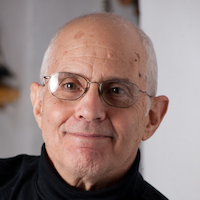Meditate, Love, Now.
Three books came across my desk in recent weeks. All three have the word love in their titles. All three have a yogic perspective, grounded in their authors’ long dedication to spiritual growth. All three were written by people I admire, and whom I interviewed for my own recent book, American Veda. And all three are worthy of attention.
Meditation for the Love of It: Enjoying Your Own Deepest Experience, by Sally Kempton, is a thoroughgoing attempt to answer all the questions and concerns that arise among practitioners of various meditation forms. As one who strongly advocates learning meditation directly from a skilled and well-trained teacher, I am not normally inclined to recommend books on the subject. I have seen too many would-be meditators go astray because the written word—especially words written in the lah-de-dah style of self-help magazines—cannot convey the subtleties of authentic meditation, nor duplicate the give and take of personal instruction. I suspect Sally Kempton would agree, and she does a fine job of overcoming the limits of the form. As a professional journalist who turned to the monastic life in the seventies (she was Swami Durgananda in the Siddha Yoga lineage), she combines a sincere and engaging writing style with a scholarly eye for detail the broad understanding of a seasoned teacher. The book covers all bases, from the initial motivation for starting a meditation practice through all the misconceptions, frustrations and confusions that meditators might encounter, to the immense, transcendent rewards of diligent practice. Kempton compares meditation to intimate relationships, in that “it requires patience, commitment, and deep tolerance,” and “is best undertaken with love.” That last point is the reason for the book’s title: meditation shouldn’t be a chore, a task, an obligation or a prescription to comply with; it is its own reward, and the highest of rewards, because at its best it settles you in ananda, the bliss that is your true nature.
Which is a good segue to Love for No Reason, Marci Shimoff’s sequel to her bestselling Happy for No Reason and a good companion to Kempton’s book. It would be easy for the jaded and skeptical to dismiss a text whose subtitle, 7 Steps for Creating a Life of Unconditional Love, could be taken as pop psych pap or a self-help bromide. That would be a mistake. Co-written with Carol Kline, Shimoff’s book is informed by the author’s own joys and losses, and by her grounding in meditation and yogic teachings. This is, in fact, one of the thousands of self-help titles published since the 1970s, whose authors are stealth yogis. As with Shimoff’s previous book, the core premise of Love for No Reason is that everything we’re looking for is already inside us. We can be happy for no reason, and we can have love for no reason because our essential nature is ananda, and the experience of all-embracing love is the natural result of awakening to that inner reality. So, if red flags go up when you read the promise on the jacket copy, “Drawing on current scientific research, ancient wisdom, and proven techniques [the program] will open your heart, make you a magnet for love, and transform your life,” you might want to silently witness that reaction and open the book—for no particular reason. To paraphrase the Bhagavad Gita, even a little of that can deliver one from fear.
If you’re a certain age, you will probably deduce who the author of the third book is the instant you hear the title, Be Love Now. Yes, it’s Ram Dass, whose iconic Be Here Now just celebrated its fortieth anniversary of entertaining and illuminating spiritual seekers. Ram Dass, of course, was once Dr. Richard Alpert, the Harvard psychologist who became the Sundance Kid to Timothy Leary’s Butch Cassidy in the “turn on, tune in, drop out” heyday of psychedelics. After his meeting his guru, Neem Karoli Baba, and returning with a new awareness as well as a new name, he became a reliable interpreter of yogic wisdom and an ever-witty teacher, beloved for his self-disclosing, “I’m-just-a-seeker-like-you” authenticity. In many ways he set the template for a new phenomenon that took off in the 1970s: the American transmitter of Eastern spiritual teachings.
Ram Dass, who turns 80 in April, is now more of a wizened elder than a hipster provocateur. Still teaching in spite of—and in many ways because of—the stroke he suffered famously in 1997, he states in the Preface, “This path takes you out of your mind and into your heart.” That’s as pithy a description of the journey from Richard Alpert to Ram Dass as can be imagined. While he never lost the sharp discernment of his academic training, Ram Dass has always been a bhakta (one who follows the path of devotion). Here the ecstasy is seasoned by the earthly challenges of age and illness, but the voice (filtered through coauthor and longtime friend, Rameshwar Das) retains his characteristic wit and charm. When I interviewed him for my book, I asked him how he saw his role in the transmission of yogic teachings to the baby boomers. “I was an uncle,” he said. He remains, like your parents’ hip younger brother, a wayshower for the next phase of life.
Three books with love in their titles, combining ancient wisdom and modern insights, just in time for Valentine’s Day.






Read 4 comments and reply